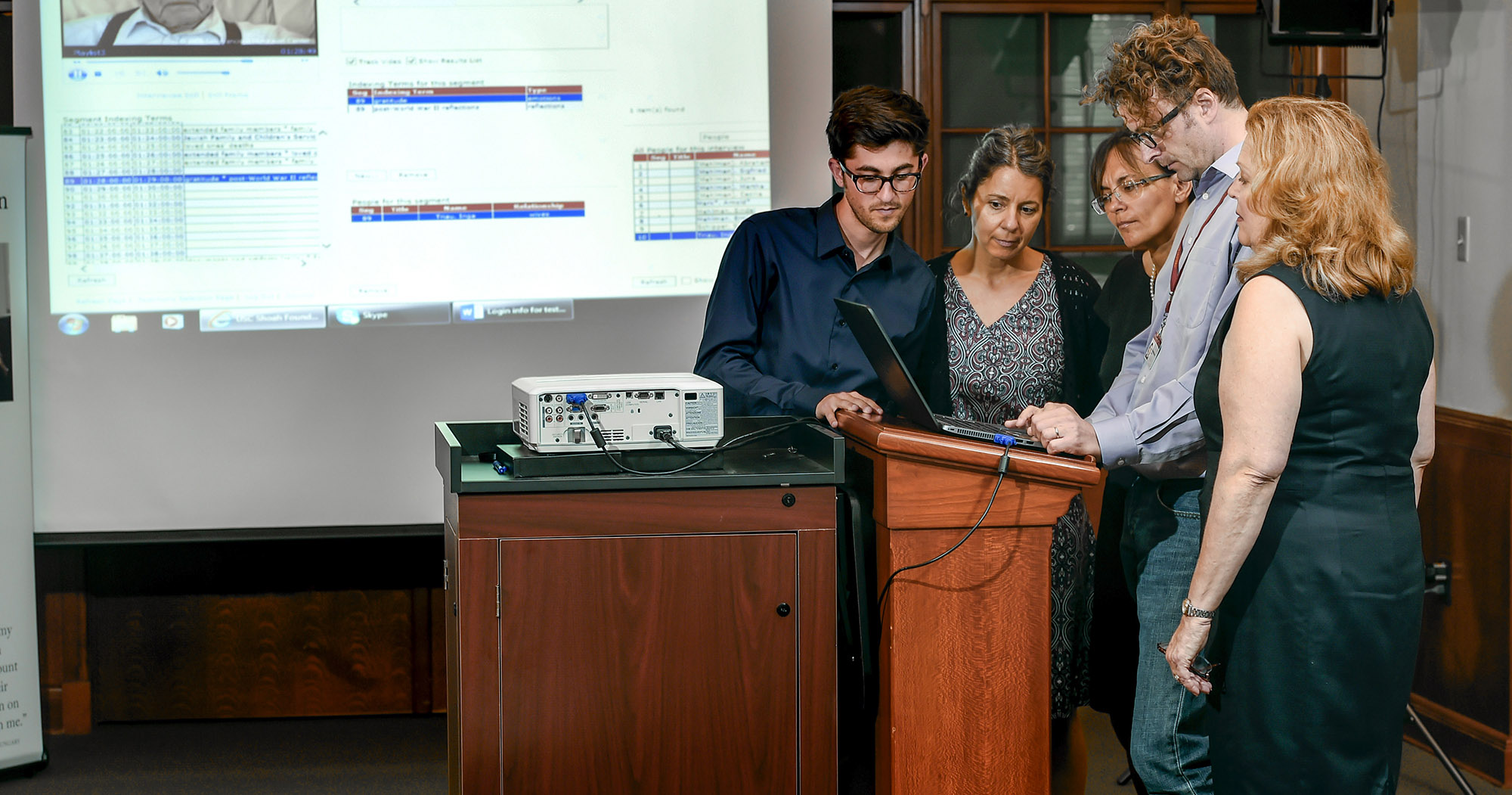Indexing Software Developed for “Group Testimonies”

Most of the time, any testimony you can find in the Visual History Archive will feature only one survivor on screen. But what if a testimony includes two or more survivors sharing their experiences with genocide? That’s where the latest, most significant update to the archive’s indexing software since 2008 comes in.
Michael Russell, lead web developer, and other staff from USC Shoah Foundation’s ITS and research departments have launched a new enhancement to the archive’s indexing software to provide a simple, streamlined process for indexing these so-called “group testimonies.”
While USC Shoah Foundation’s original Holocaust collection includes very few group testimonies, its newly acquired collections including the Armenian Genocide and Holocaust collections from San Francisco and Canada may follow different formats and include testimonies with more than one survivor.
In the past, if multiple speakers (other than family members) appeared in a single testimony, ITS staff would simply duplicate the testimony and an indexer would re-index it (assign keywords to each minute) for the additional speaker.
Under the new system, indexers can tag each individual speaker in the testimony and provide indexing terms for each person within the group testimony itself. The testimony will contain sets of indexing terms for all the speakers, not just one.
The enhancement introduces the concept of the “current speaker,” since the indexer must be able to assign keywords to whoever is currently speaking in each minute of the testimony. Indexers can easily tag the speaker as he or she begins talking and start adding the appropriate indexing terms.
When watching the testimony in the Visual History Archive, users will be able to view all the indexing terms for all the speakers and switch between each set of terms within the single testimony instead of watching several separate but identical testimonies. The title of the testimony will also designate it a “group testimony,” making such interviews easier for users to identify when searching the archive.
The enhancement is supported by Mac and Windows operating systems, six internet browsers, and two video players, allowing easy access to indexers working anywhere in the world. Russell said one of the most important aspects of the new system is that indexers can handle group testimonies on their own; they no longer need to involve additional technical staff to make one-off adjustments to the indexing software.
Russell expects new group testimonies to go live in the Visual History Archive later this year.
Like this article? Get our e-newsletter.
Be the first to learn about new articles and personal stories like the one you've just read.